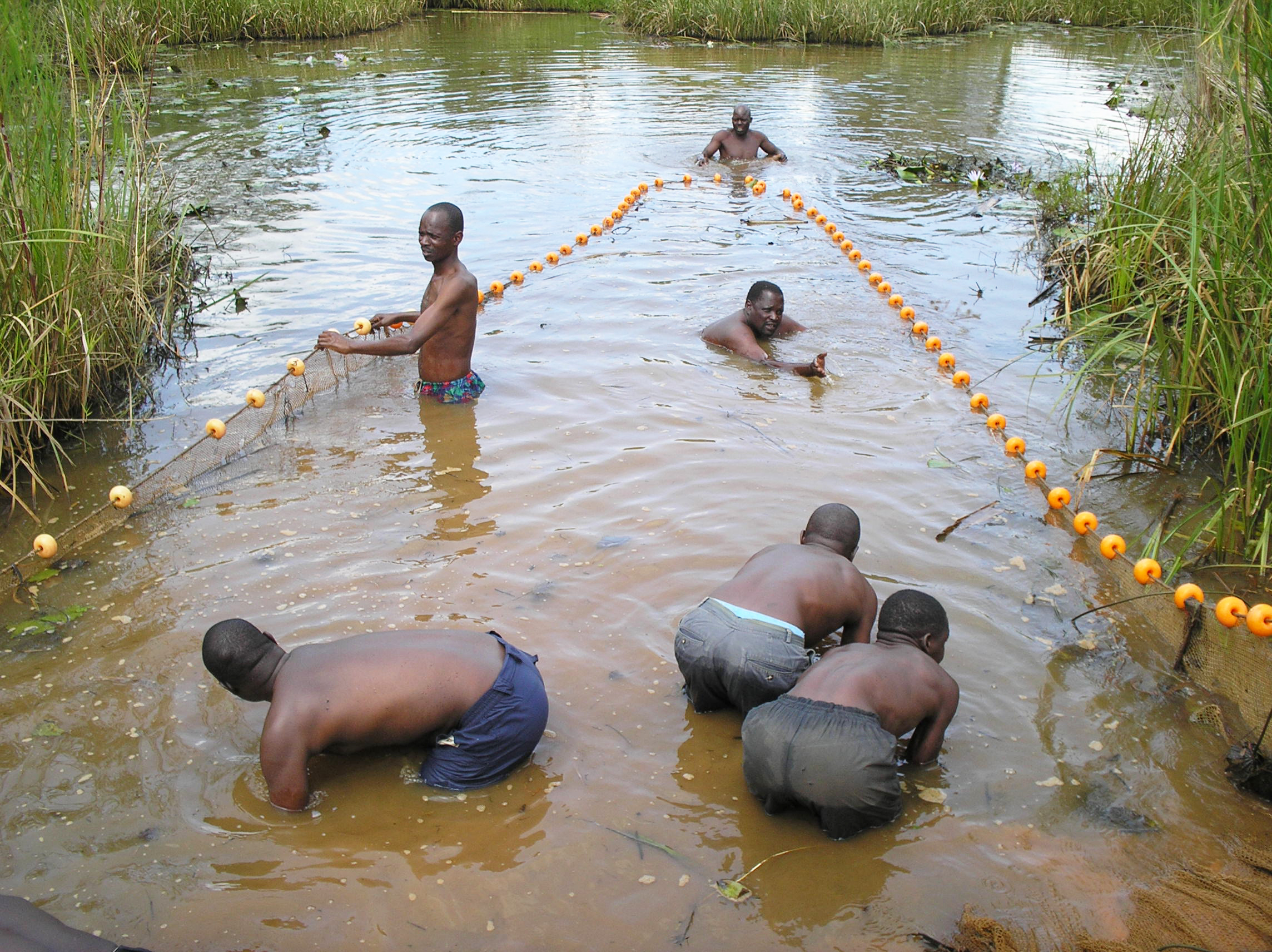
Almost 46 percent of the world’s total fish production in 2018 came from aquaculture, up from 25.7 percent in 2000. The sub-sector is also a growing employer across the world. It employs over one-third of all the global work force in fisheries and aquaculture—35 percent in 2018, up from 17 percent in 1990. It is expected to contribute 48 percent of global fish production by 2030. Investor interest in aquaculture is increasing in many countries, especially in Asia.
Such economic growth must be matched with socio-environmental concerns. New trends in aquaculture activities need to be identified. Occupational safety and health issues need to be addressed, while accounting for women’s work, social development and gender relations. Crucially, any threats to fishing communities from aquaculture operations, including their tenure rights, must be addressed. There is also a need to outline responsible practices and appropriate forms of small-scale aquaculture.
ICSF’s aquaculture programme will look at how the sector can contribute to Sustainable Development Goals (SDG) by 2030. How to better understand this growth and its implications. How to secure local community rights over water bodies. How to build capacities, use local species that contribute to food security.
In 2010 ICSF and Kolkata’s Inland Fisheries Society of India (IFSI) held a workshop titled ‘Small Indigenous Freshwater Fish Species: Their Role in Poverty Alleviation, Food Security and Conservation of Biodiversity’ to bring together stakeholders. It highlighted the role of small indigenous freshwater fish species (SIFFS)—of unique nutritional benefit if cooked in traditional ways—in rural food and livelihood security, as also in conserving biodiversity. Their socioeconomic and cultural relevance, how to enhance access, especially of women, to better income and nutrition.
ICSF will launch a new programme in 2020 to study India’s aquaculture systems to promote sustainable development and a human rights-based approach.

Aquaculture is poised for boom all over the world especially in countries like India where it is traditionally practised. ICSF launched a new programme in 2020 to study India’s aquaculture systems to promote sustainable development and a human rights-based approach. India’s Neel Kranti Mission (Mission Blue Revolution) aims to triple fish production, especially from aquaculture.
This technical paper presents three major sets of information resource: (i) five case studies from five Asian countries, (ii) the synthesis of the case studies and (iii) the report of...
Risks from weather events can be minimized if the right decisions are made based on the weather forecast and considering the existing context of the ponds. The type and magnitude...
Network for the Development of Agricultural Cooperatives in Asia and the Pacific (NEDAC) is a unique regional forum linking 21 apex cooperative organizations in 12 countries. https://www.youtube.com/watch?v=GbH_FpqJmrM
Network for the Development of Agricultural Cooperatives in Asia and the Pacific (NEDAC) is a unique regional forum linking 21 apex cooperative organizations in 12 countries. https://www.youtube.com/watch?v=GbH_FpqJmrM
This article presents a comprehensive overview of the status, relevance, and impact of the quality management systems in the development of marine aquaculture, with the focus on four of the...
This paper aims to use three kinds of production function groups; the input, treatment and output functions to describe and define the terms extensive, semi-intensive and intensive explicitly. The resulting...
Around 12,000 families from more than 100 villages lost their source of livelihood due to the construction of the Chandil dam in Jharkhand. Pisciculture or fish farming in cage culture...
This paper contributes to improving the understanding and measurement of aquaculture and fisheries’ contribution to GDP by: (i) using input-output models; (ii) alternative methods to estimate the measures under data-poor...
This study quantifies the global GHG emissions from aquaculture (excluding farming of aquatic plants) and explains how cost-effectiveness analysis (CEA) could be used to appraise GHG mitigation measures. http://www.fao.org/documents/card/en/c/ca7130en
This paper describes the theory and practical aspects of blue economy and provides an outlook for the future. Aquaculture has been identified as a Blue Growth Priority and this report...